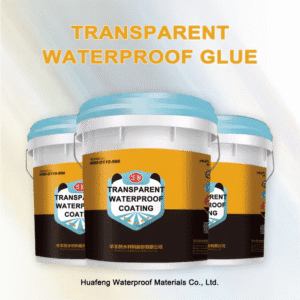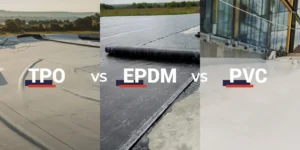Oil-based polyurethane waterproofing coatings are widely used in building waterproofing due to their excellent performance. A key concern for many users is whether these coatings resist sunlight effectively. By combining material properties, real application cases, and industry research, the following provides a comprehensive analysis:
I. Weathering Resistance Analysis of Oil-Based Polyurethane Waterproofing Coatings
Oil-based polyurethane waterproofing coatings are primarily composed of polyurethane prepolymers. Once cured, they form a highly elastic waterproof membrane with excellent tensile strength and elongation. Their weathering resistance depends on several factors:
1. UV Resistance
Pure polyurethane materials may suffer molecular chain scission when exposed to prolonged ultraviolet (UV) radiation. This can cause coating powdering, discoloration, and performance degradation. However, modern formulations often include UV absorbers (e.g., carbon black, titanium dioxide) and antioxidants, significantly improving aging resistance. For example, some brands utilize nano-modification technology to extend outdoor service life to 8–10 years. (See “Lifespan of Oil-Based Polyurethane Waterproofing Coatings” for further discussion.)
2. Temperature Adaptability
These coatings typically show good resistance to high temperatures, enduring ambient ranges from -40°C to 80°C. However, if the substrate temperature exceeds 100°C due to intense sunlight, the coating may soften or blister. It is advisable to avoid application during peak noon heat and ensure the substrate is dry.
II. Practical Sun Protection Performance
Feedback from construction projects using oil-based polyurethane coatings on roofs highlights the following:
Advantages:
-
Seamless film formation effectively prevents leakage, making it ideal for irregular structures.
-
Short-term exposure (1–3 years) shows no significant degradation; crack resistance surpasses asphalt-based materials.
Limitations:
-
Prolonged, unprotected UV exposure can cause slight surface chalking, necessitating a protective layer such as tiles or reflective coatings to delay aging.
-
Dark-colored paints absorb more heat, so lighter or silver finishes are recommended to reduce thermal radiation impact.
III. Key Measures for Improving Sun Resistance
1. Material Selection:
Choose products labeled for outdoor use or containing UV-resistant additives. For instance, certain “all-weather” polyurethane coatings demonstrate over 90% tensile strength retention after 500 hours of QUV accelerated aging tests.
2. Application Process:
-
Substrate Preparation: Thoroughly clean dust and oil to ensure proper adhesion.
-
Coating Thickness: Do not exceed 1 mm per layer; total thickness should be 1.5–2 mm. Thin layers accelerate UV penetration.
-
Protective Layer Design: For roofing, a composite structure of coating + reflective film + concrete mortar is recommended.
3. Maintenance Recommendations:
Inspect coatings every 2–3 years. Areas showing chalking can be sanded and recoated with a protective topcoat.
Summary
Are oil-based polyurethane waterproofing coatings susceptible to sun exposure? While UV rays can degrade these materials over time, scientific material selection and proper application techniques minimize long-term effects. Combining protective measures tailored to specific projects maximizes waterproofing performance. Additionally, SBS base treatment agents have recently been introduced to enhance durability.
Contact Us
For more information or to inquire about our waterproof floor paint solutions, feel free to get in touch with us. We’re here to help!
- Phone: +86 138 6365 6701
- Email: Huafengwaterproof@gmail.com
- WhatsApp: +86 138 6365 6701
We look forward to assisting you with all your waterproofing needs!






